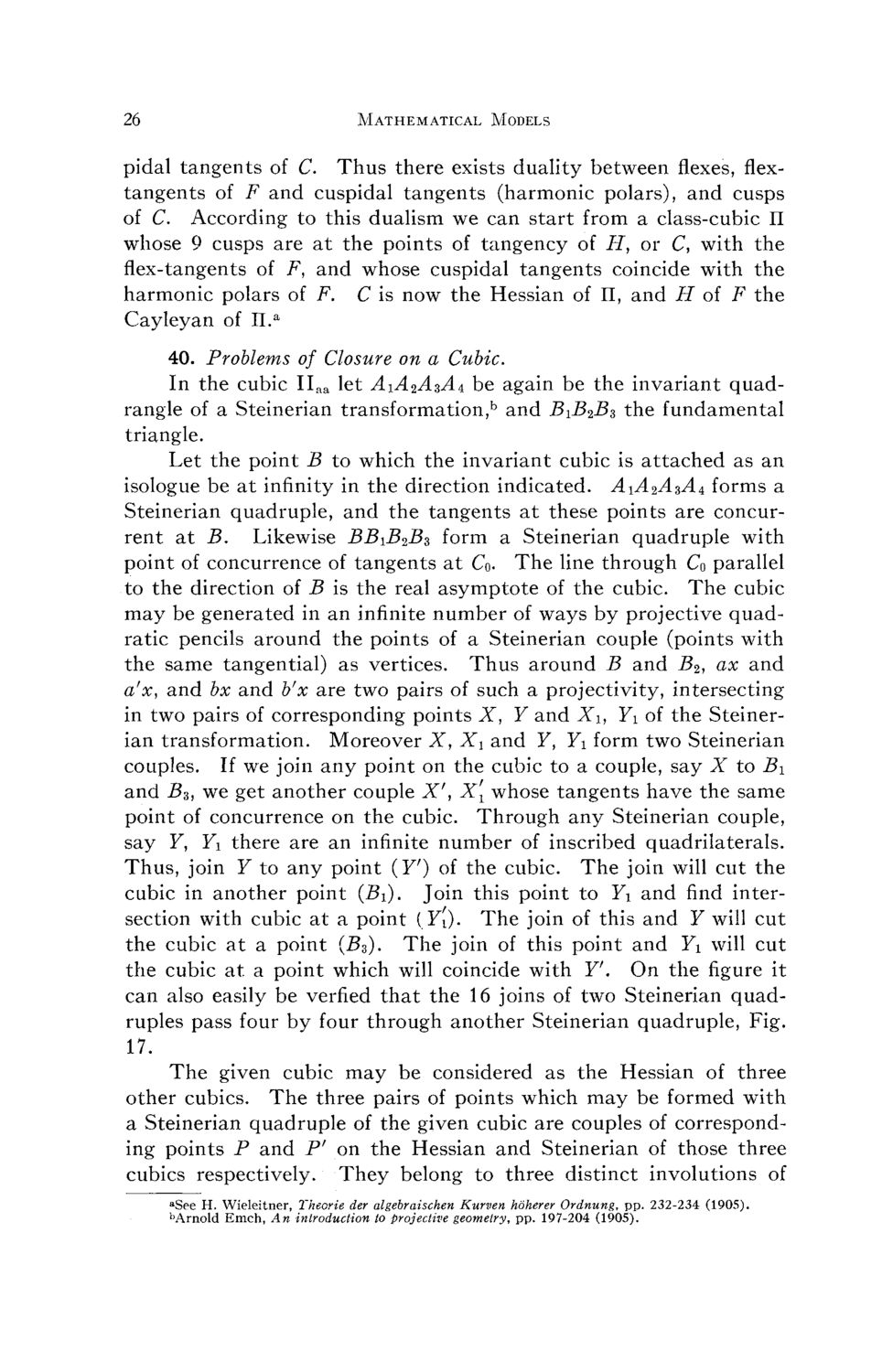| |
| |
Caption: Mathematical Models by Arnold Emch - Series 4 (1928)
This is a reduced-resolution page image for fast online browsing.

EXTRACTED TEXT FROM PAGE:
26 Mathematical Models pidal tangents of C. Thus there exists duality betweenflexes,flextangents of F and cuspidal tangents (harmonic polars), and cusps of C. According to this dualism we can start from a class-cubic II whose 9 cusps are at the points of tangency of H , or C, with the flex-tangents of F, and whose cuspidal tangents coincide with the harmonic polars of F. C is now the Hessian of II, and H of F the Cayleyan of I . Ia 40. Problems of Closure on a Cubic. In the cubic IIaa let A1A2A3A4 be again be the invariant quadrangle of a Steinerian transformation,5 and BiB2Bs the fundamental triangle. Let the point B to which the invariant cubic is attached as an isologue be at infinity in the direction indicated. A1A2A3A4 forms a Steinerian quadruple, and the tangents at these points are concurrent at B. Likewise BB\B2B% form a Steinerian quadruple with point of concurrence of tangents at Co. The line through Co parallel to the direction of B is the real asymptote of the cubic. The cubic m a y be generated in an infinite number of ways by projective quadratic pencils around the points of a Steinerian couple (points with the same tangential) as vertices. Thus around B and B2, ax and a'x, and bx and b'x are two pairs of such a projectivity, intersecting in two pairs of corresponding points X , Y and Xi, Yi of the Steinerian transformation. Moreover X , Xx and F, Y\ form two Steinerian couples. If we join any point on the cubic to a couple, say X to B\ and B3} we get another couple X', X1 whose tangents have the same point of concurrence on the cubic. Through any Steinerian couple, say F, Fi there are an infinite number of inscribed quadrilaterals. Thus, join F to any point (F') of the cubic. The join will cut the cubic in another point (Bi). Join this point to Y\ and find intersection with cubic at a point ( Ft). The join of this and F will cut the cubic at a point {Bz). The join of this point and Y\ will cut the cubic at a point which will coincide with F'. O n thefigureit can also easily be verfied that the 16 joins of two Steinerian quadruples pass four by four through another Steinerian quadruple, Fig. 17. The given cubic m a y be considered as the Hessian of three other cubics. The three pairs of points which m a y be formed with a Steinerian quadruple of the given cubic are couples of corresponding points P and P' on the Hessian and Steinerian of those three cubics respectively. They belong to three distinct involutions of aSee H. Wieleitner, Theorie der algebraischen Kurven hoherer Ordnung, pp. 232-234 (1905). bArnold Emch, A n introduction to projective geometry, pp. 197-204 (1905).
| |